Closely following the fitness industry, there is rarely a shortage of topics to write about. Our schedule, reflecting this accurately, tries to cover a variety of titles, often exhausting a narrow niche. We did it in the past with workout reviews, popular fitness products, and a garden variety of lifestyle design hacks. Now, our focus goes elsewhere, zooming in on a very important subject – announcing the start of a new series, Lifestyle Updated is looking at popular diets.
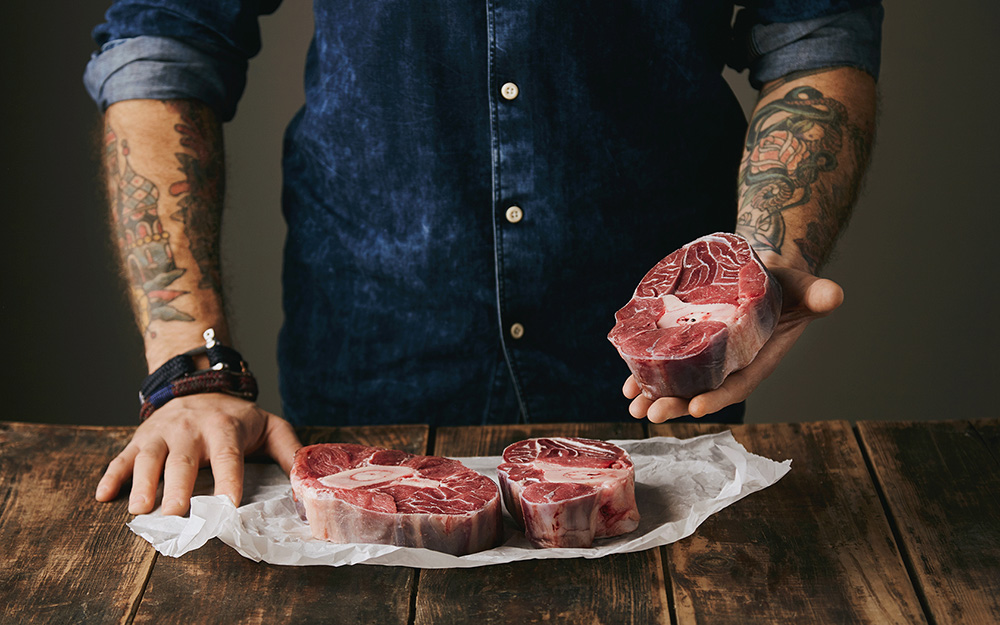
Having click-bait magazines to thank, diets have become a synonym for weight loss. Despite a sea of information, many of us have forgotten how valuable they are in managing hundreds of medical conditions, cultivating health and improving performance.
This article, far exceeding the average attention span, has therefore a singular purpose – to delve deep into one of the most trending diets, the carnivore diet, considering both benefits and common concerns.
Examining the meat only diet, we will try to answer some of the frequently asked questions, bring forth the studies, and some of the seriously opposing views. The carnivore diet is a rather hot topic across different communities, so we are likely going to step on a number of toes as well. Apologies upfront!
The popularity of the carnivore diet
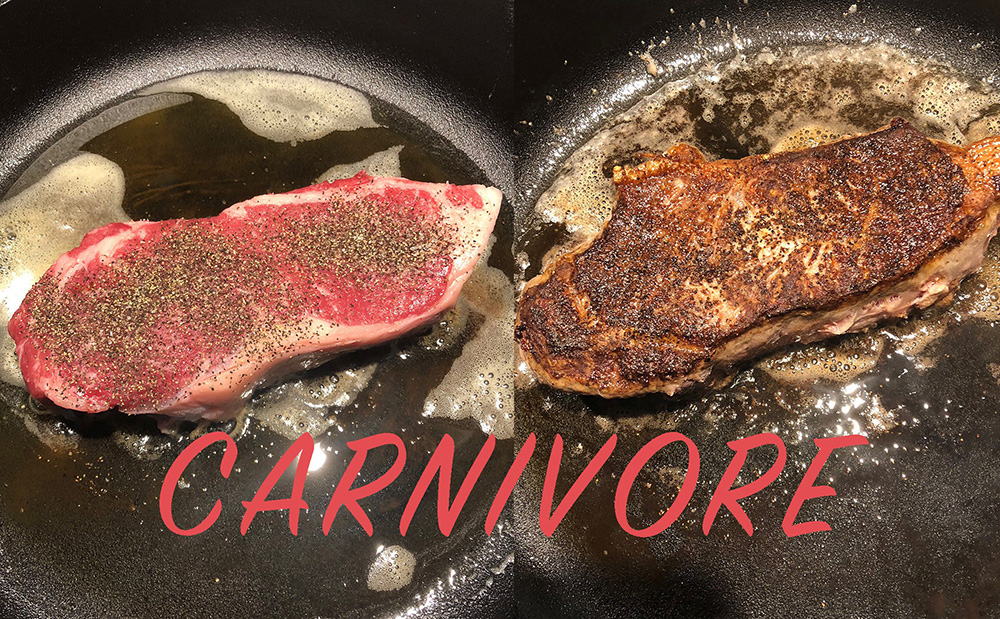
Starting to trace the origin of the viral movement, I went straight ahead to familiar places. But after chasing my tail around the maypole, it became patently obvious that bodybuilding forums and healthy magazines are outdated, and seriously lagging behind. Truth be told, this is putting it mildly.
The search for information on the carnivore diet took me elsewhere, to what is perhaps the last place you would think of – the crypto community.
Though Bitcoin enthusiasts are busy talking about the future of decentralized currencies, bear and bull markets, many of them are surprisingly invested into experimental diets as well. Silicon Valley, for better or worse, has become the capital of carnivores.
The Bitcoin carnivores – as they often call themselves – seem to preach about protein as much as they do about crypto. You have to believe me, because I’ve nearly broken my mouse wheel trying to scroll down through several of their conversations on Twitter.
So who are the advocates for the carnivore diet?
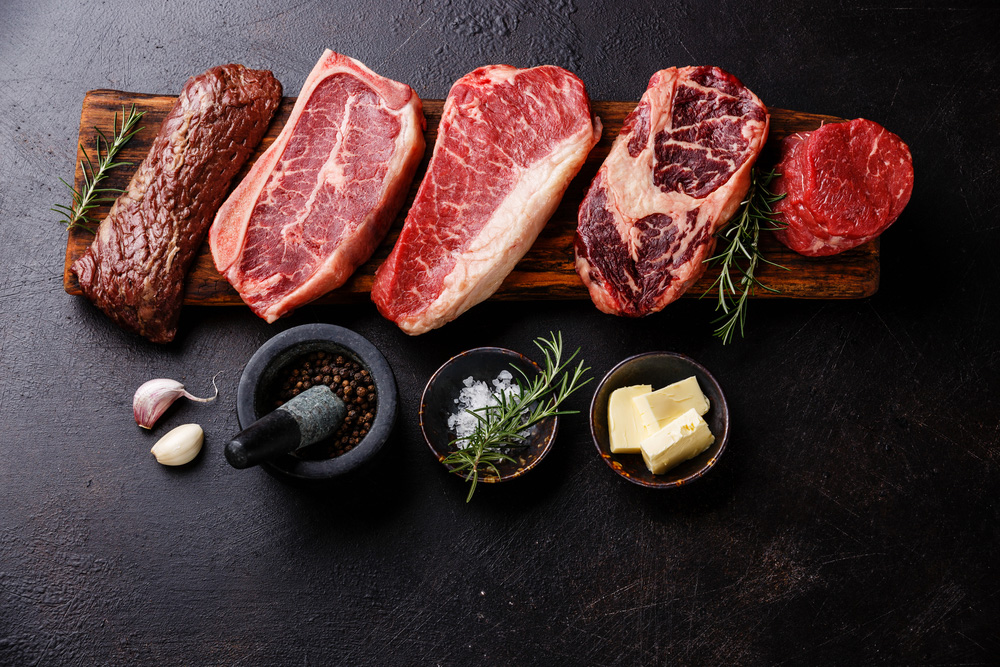
If you want to follow true meat aficionados, go and watch Parks and Recreation. Ron Swanson is the source of all memes you’ll find on the internet.
Other than that, few Twitter accounts come to mind (though they rarely tweet about the carnivore diet). These are very prominent members of the crypto community who also know what they are talking about when it comes to food.
 Check Saifedean Ammous (an economy professor, and author of The Bitcoin Standard), Michael Goldstein (the president of the Satoshi Nakamoto Institute), and Zooko Wilcox (the CEO of zCash). I will list some of their writings below.
Check Saifedean Ammous (an economy professor, and author of The Bitcoin Standard), Michael Goldstein (the president of the Satoshi Nakamoto Institute), and Zooko Wilcox (the CEO of zCash). I will list some of their writings below.
 Outside of the crypto community, Shawn Baker is an orthopedic surgeon and record holding New Mexico athlete who also writes a lot about the carnivore diet, discussing meat only diets in medical but historical context as well. At his early 50’s he is a strength athlete who continues to set world records in indoor rowing. The story about his journey towards the carnivore diet is pretty much the same template that repeats over and over again – from a regular and balanced diet, to a Paleo diet, then to a low carb diet, and finally an experiment with Keto before turning full carnivore.
Outside of the crypto community, Shawn Baker is an orthopedic surgeon and record holding New Mexico athlete who also writes a lot about the carnivore diet, discussing meat only diets in medical but historical context as well. At his early 50’s he is a strength athlete who continues to set world records in indoor rowing. The story about his journey towards the carnivore diet is pretty much the same template that repeats over and over again – from a regular and balanced diet, to a Paleo diet, then to a low carb diet, and finally an experiment with Keto before turning full carnivore.
 You will also hear the popular clinical psychologist, and professor at the University of Toronto, Jordan Peterson, speaking – with gusto – about the carnivore diet. He owes much of this devotion to his daughter, Mikhaila Peterson, who is perhaps the poster girl for the carnivore lifestyle.
You will also hear the popular clinical psychologist, and professor at the University of Toronto, Jordan Peterson, speaking – with gusto – about the carnivore diet. He owes much of this devotion to his daughter, Mikhaila Peterson, who is perhaps the poster girl for the carnivore lifestyle.
 If you want to read more, look for Dr. Georgia Ede, Dr. Stephen Gundry, and Joe and Charlene Andersen (who’ve been eating nothing but fatty steak for 19 years).
If you want to read more, look for Dr. Georgia Ede, Dr. Stephen Gundry, and Joe and Charlene Andersen (who’ve been eating nothing but fatty steak for 19 years).
 Moving on, L. Amber O’Hearn is a radical carnivore who writes about the science of ketogenic diets, and her personal blog Empiri.ca is one of the best resources for entering the carnivore lifestyle.
Moving on, L. Amber O’Hearn is a radical carnivore who writes about the science of ketogenic diets, and her personal blog Empiri.ca is one of the best resources for entering the carnivore lifestyle.
 Dr. Zsofia Clemens, who is another convincing meat enthusiast, is a neurobiologist, clinical researcher, and head of the Paleo Medicina Institute in Hungary, where they use the carnivore diet to treat a host of chronic conditions that are otherwise debilitating or even fatal. So definitely check her writings as well.
Dr. Zsofia Clemens, who is another convincing meat enthusiast, is a neurobiologist, clinical researcher, and head of the Paleo Medicina Institute in Hungary, where they use the carnivore diet to treat a host of chronic conditions that are otherwise debilitating or even fatal. So definitely check her writings as well.
Support for the movement, however, comes in other forms as well – thousands of testimonials are advocating the practice of eating meat, promoting some miraculous carnivore diet results. Meat Heals is a great example, where people write about their experience with the meat only diet, often attributing many of their health improvements to the practice of becoming a carnivore.
On the opposite side of the fence, critics are not convinced by anecdotal evidence. Without empirical evidence – they’d say – you cannot arrive at any conclusion. Pulling up a Cochrane meta-analysis of carnivore diet studies is impossible as well.
It seems as though all we really have are anecdotes. But at some point, the weight of these anecdotes adds up to something quite substantial and therefore suggestive.
If you decide to look past the cultural conditioning, which is essentially trying to convince everybody that meat causes heart disease, cancer and diabetes, animal food seems to be the “baseline food” for us as a species. But let’s get there one step at a time.
What is the carnivore diet?
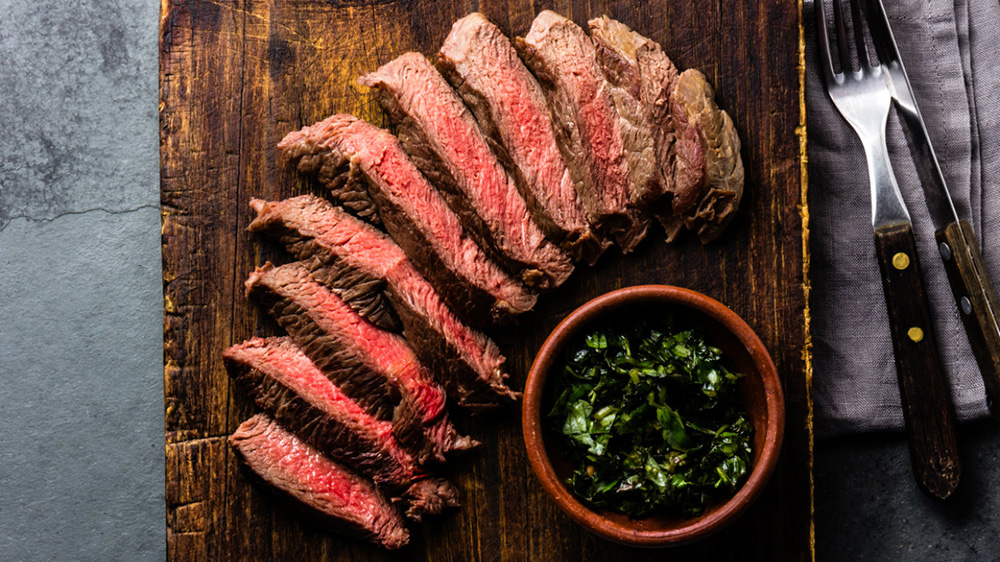
A carnivore, by definition, is an organism that derives energy and nutrient requirements from a diet consisting mainly, if not exclusively, of animal tissue.
Following further classification, you have obligate carnivores – a group of meat eaters who depend solely on animal flesh for meeting their nutrient requirements.
Our influencers from above often recommend this radical approach by embracing the meat only diet. However, we will discuss about specific foods in a minute.
The carnivore diet, otherwise known as the all meat diet, is exactly what it sounds like. It is an experimental diet where you have to survive on meat only.
Survive, perhaps, is not the right wording. Doing the research so far, I’m nearly convinced that you can thrive on a meat only diet, without missing a thing in the world.
Other names often describe the same lifestyle, so you will hear about the all meat and no plants diet, the zero-carb diet, zero plants food diet, and the anti-vegan diet.
The carnivore community believes that we have evolved to mainly eat meat. Turning to plants, according to them, was only necessary in times of near starvation. Fueled by protein and fat derived from animals, the goal of the carnivore diet is to bring body and mind to peak performance.
Many carnivore dieters are experimenting on their own trying to figure out a solution to a physical or mental ailment. You will often find evidence of people managing certain conditions that previously haven’t responded to medication or traditional treatment. The Meat Heals website linked above is perhaps the perfect example.
A number of folks would report relief from their autoimmune disease symptoms, or digestive problems that have persisted for years on end. Obesity, more obviously, is fixed without necessarily having to undergo a fitness regimen, so if you want to lose weight by chewing a ribeye steak, this is perhaps the easiest solution to sustainable weight loss.
According to many, the carnivore diet is an extreme version of the Keto diet, and a more extreme version of the Paleo diet. We will cover both similarities and differences in more detail below.
The goal of the Carnivore diet is training your body to run on protein and fat instead of carbs. Approaches may vary, so you’ll hear about people consuming animal products as opposed to meat only.
Fish can find its way on the list, followed by bone broth, cheese, eggs, grass fed butter, and heavy cream. Milk and yogurt are avoided because they contain more carbs.
Mistakenly, people presume that the meat only diet is mostly about steak. But there is a garden variety of meat cuts that contain different nutrients, and then there is organ meat like liver, kidneys, tongue, heart and brain. Did I mention seafood?
You can eat beef, pork, lamb, wild game, birds, chicken, turkey, fish and seafood. Considering organs and different cuts, the variety is endless.
Answers on how to start the carnivore diet would include more details below, and we will cover the entire carnivore diet menu along with a carnivore diet shopping list. But let’s explain the mechanics behind a meat only diet.
How does the carnivore diet work?
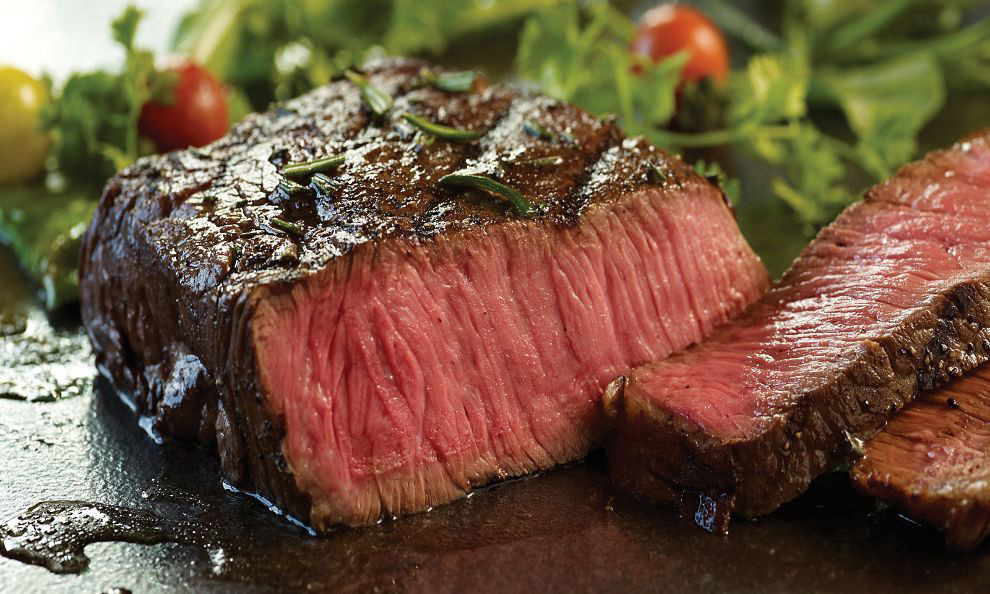
Plants in the background, doing what they do best – decoration
In historical context, we began eating meat 2.5 million years ago. Prior to this, our ancestors ate a vegan diet of flowers and berries, later followed by nuts and seeds.
Taking more fat from these sources, on the account of lowering fiber intake, our bodies slowly adapted to handle meat.
So what is the mechanism behind food-to-energy conversion, and how does meat compare against carbs?
The easiest way for our body to create energy is by converting carbohydrates into glucose. When there are no carbs available, the body will burn fat, and break down proteins in a process called gluconeogenesis.
This process occurs in the liver, creating a nitrogen waste that is later converted into urea. People fear that too much of this can lead to protein poisoning, but we will discuss such concerns below.
The carnivore diet is based on a theory that our ancestors mainly preferred meat. Gathering fruits and vegetables was not energy efficient, so they invested more time and focus on hunting rather than gathering. Hunting tools were among the first man-made items, and that speaks volumes about how important meat was.
Georgia Ede MD would share a historical observation about vegan and carnivore diets in order to support this theory:
”To the best of my knowledge, the world has yet to produce a civilization which has eaten a vegan diet from childhood through death, whereas there are numerous examples throughout recorded history of people from a variety of cultural, ethnic and geographical backgrounds who have lived on mainly-meat diets for decades, lifetimes, generations.”
Protein-fat ratio for the carnivore diet
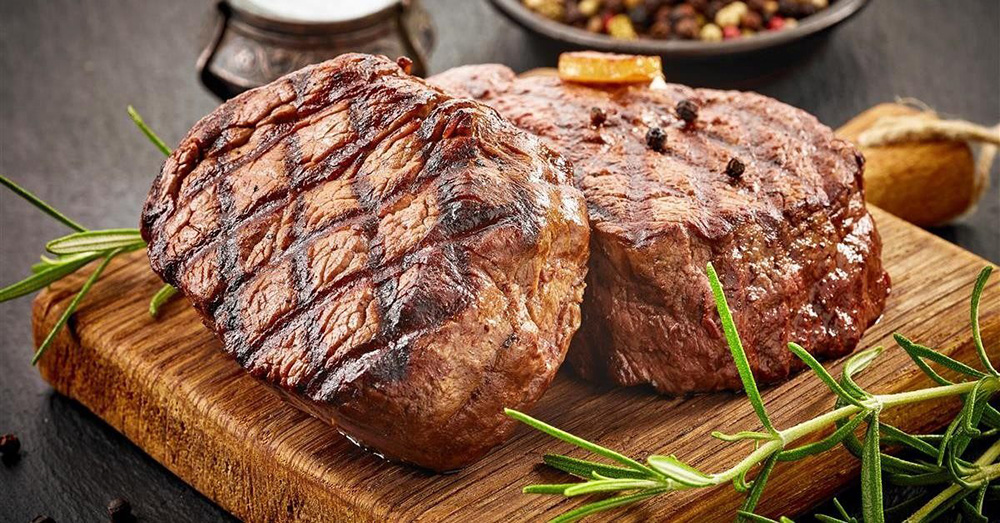
Before we begin to analyze the nutrient content of the carnivorous diet, it is important to mention the Inuit. These are people who live in the arctic regions of Alaska, Canada and Greenland, still preserving their traditional way of live.
The Inuit diet was originally observed by explorer Vilhjalmur Stefansson, who adopted the Eskimo diet for five years during his arctic expeditions at the very beginning of the 20th century.
In 1928, he went on to convince the scientific public that you can live on a meat only diet for an entire year without any side effects. Along with a colleague, he adopted an Americanized version of the Inuit diet under medical supervision at Bellevue Hospital in New York.
The Maasai, which is another tribal group inhabiting Kenya and Tanzania, have also depended primarily on meat.
Note, however, that a meat only diet must consist of fat as well. The Inuit diet consisted of nearly 50% fat. Loren Cordain, who is a professor of evolutionary nutrition at Colorado State University, concludes that protein cannot be the only source of energy in a human diet. If you are eating a low carb diet, fat must be on the menu.
Even though protein allowance goes up when you start to cut carbohydrates, too much protein can definitely overwhelm the liver and your waste disposal system. According to John Speth, who is an archaeologist at the University of Michigan, there is plenty of historical evidence to be cautious of protein excess – intuitively, hunters avoided fat-depleted animals even when food was scarce.
This is often called rabbit starvation – rabbit meat is very lean and therefore you can eat in excess while still losing weight and energy.
But when you hear mandatory fat intake, it doesn’t mean that you should eat an excess of lard. Furthermore, fat from wild animals is different in composition than fat from domestic farm-animals. The latter have more solid and highly saturated fat which is best to be avoided.
To be honest, when I first started researching about this diet, it had FAD written all over it. But once you dig in, there is more to it than it meets the eye. That being said, I’m writing this article partially for myself – to reflect upon my food choices, and find a solution to some of my anxiety problems outside of the orthodox Cheat Sheet.

This is me two years back – an image I hope I’m coming back to. I gained some weight due to lethargy and depression, but a low carb diet is quickly remedying most of it. I wonder what a zero carb diet can do for me!
I’ve been passionate about fitness for the last 7 years now, and invested two years of my life to co-create a very useful online platform for on-demand fitness (video workouts, nutrition, progress tracking and much more…) Having said that, I’m a little bit ashamed that this topic never entered my radar.
Benefits of the carnivore diet
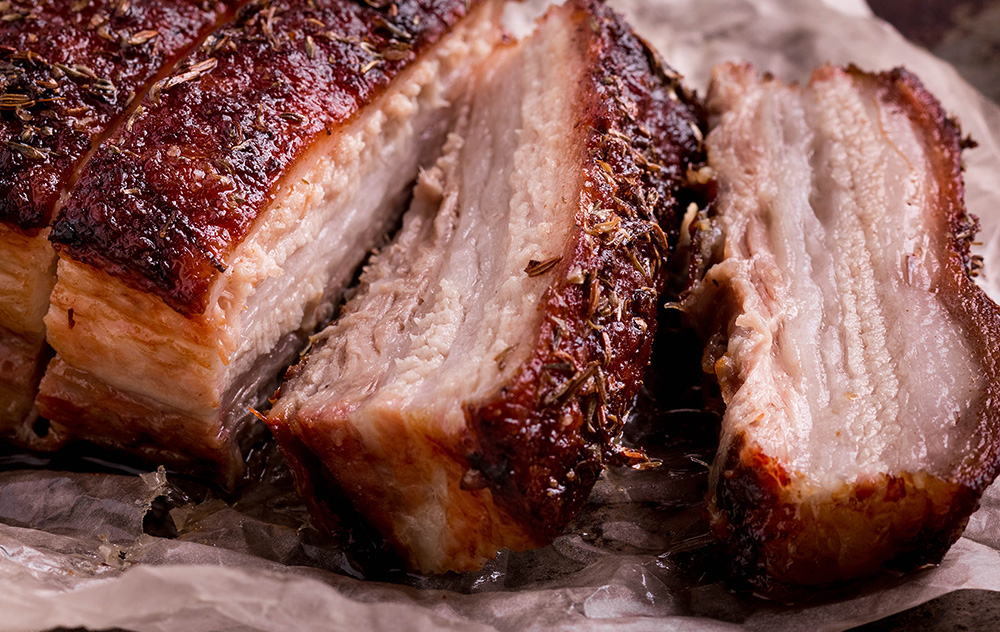
This, I believe, is the chapter many people are here for. Testing something new and rather controversial has to offer a huge potential upside in order to give it a shot.
Before we continue, allow me to slip in a cautionary disclaimer – I’m not a nutritionist, nor a medical professional, so take everything here with a grain of salt. Trying experimental diets that often bring about radical lifestyle changes is always a huge deal. Do your own due diligence or consult with your doctor.
That being said, I will try to surmise what seems to be an endless row of open tabs on my browser, coming up with some of the key carnivore diet benefits.
Eating, simplified
Reading about different types of food, there is never a shortage of information that you have to remember. Hacking your diet, therefore, appears to be rocket science. Some foods are rich with X and some more so with Y, but combining them often creates a headache.
There is insufficient evidence on how different types of food react with one another, thus canceling or enhancing some of their properties.
Then, there is much to be said about bioavailability. Some sources of food offer more bioavailable micronutrients than other sources of food, so knowing that spinach has iron doesn’t necessarily mean a lot, when you also know that iron in animal foods exists in the form of heme, and is thus more bioavailable.
Eating a meat only diet will greatly simplify your menu. Instead of scratching your head over macronutrient ratios, the calculus would be much simpler. There are no fancy carnivore diet recipes to search for online, nor any science behind the preparation method. With meat in your fridge, your imagination is limited to only so much. And oh am I saying this with a smile on my face, feeling instant relief!
More bioavailable nutrients
Many plant based nutrients are lost during preparation. On top of that, there are minerals like calcium and magnesium where bioavailability is likely greater without plant matter in your diet.
Grains and legumes contain lectin, glutens, and phytates, thus further affecting the absorption of certain minerals like potassium and magnesium.
Nutrient bioavailability from plants is in many cases significantly compromised. Just because a plant contains a nutrient does not mean we can access it. One example: due to the oxalate within spinach, virtually none of the iron within spinach is available to the human body…
…Diets high in refined carbs deplete many nutrients, increasing our apparent requirements. ~ Dr. Georgia Ede
Oh poor Popeye!
Although certain vitamins and minerals are measured under the same name, they differ in both form and bioavailability between plants and animal sources.
Never hungry
Other diets will have you cursing the skies left and right. Their sustainability, therefore, is brought into question. With most of the carnivore diets, you will never feel hungry. This, in turn, will allow you to remain more accountable for the entire duration of the experiment.
Weight loss
The carnivore diet comes very close to a magic weight loss pill. You will eat juicy steaks and still burn through most of your stubborn fat.
It took me years of trial and error to finally understand, at least intuitively, the dynamics of my body. When I was preparing to film the workouts for Fitness Updated, I dropped my carb intake significantly, and weight loss immediately became a non-issue.
If you want to drop several pounds in your first week, and continue at a healthy pace, the meat only diet seems greatly beneficial.
And here is another scientifically backed claim – the more carbs you eat, the more glucose you have available in your body, and this greatly determines what you burn for energy. A study published in the American Journal of physiology clearly shows that fatty acid oxidation decreases significantly as glucose oxidation increases.
We conclude that under the conditions of the present experiment, glucose and/or insulin directly inhibits fatty acid oxidation. Our findings suggest that, contrary to the prediction of the glucose-fatty acid cycle, the intracellular availability of glucose (rather than FFA) determines the nature of substrate oxidation in human subjects.
The cited text is an excerpt from the study abstract, and this is the graph that clearly shows how measurements differ as compared to the basal.

Increased strength
At first this would sound very counterintuitive, especially if you are convinced about carbs being the main source of energy.
Most of the people writing about the carnivore diet report strength gains. This is not unusual if you look below the surface. Meat will provide tons of protein, most of which is slowly released, and you will have constant fuel for your muscles.

For a sailor, Popeye should know better!
On top of that, an all meat diet will increase testosterone, which is naturally followed by increased strength.
Ryan Munsey is a performance coach with a degree in food science and human nutrition and he has been on a ketogenic diet for many years. After experimenting with the carnivore diet for 35 days, his strength greatly improved, even though he was losing weight.
His two-rep max for the deadlift went from 335 pounds to 375 pounds and from 205 to 220 pounds on the inclined bench press.
More energy and improved quality of sleep
At this point we are combining the effects of what is a mix between weight loss, hormonal balance, and gluconeogenesis. Many testimonials report a surge in energy, and improved quality of sleep.
Much of this, perhaps, is thanks to an increased intake of protein. A study published in the American Journal of Clinical Nutrition followed obese participants who ate normal and high protein diets. The second group was sleeping better after three and four months.
Improved libido
Interviewed by the Guardian, Shawn Baker says that his libido went back to what it was in his 20’s. And while some people may point out to his overall lifestyle, the only variable he changed was diet.
Reduced decision making fatigue and improved productivity
This relates very much to the first point – kitchen prep can cause quite the headache, and eliminating 90% of it saves you tons of energy.
But it gets broader. Saifedean Ammous, for example, cited in the same Guardian article on carnivore eating, notes how the meat only diet hugely improved his productivity.
The ability to focus for long periods has been life transforming, and was the reason that I managed to write a 300-page book, on bitcoin, fittingly enough!
Many of the people giving testimonials brag about improved mental clarity, which is again anecdotal evidence. But it piles up!
Reduced anxiety
Zero Carb Zen is another popular website where you can learn much about the carnivore lifestyle. One search for anxiety will bring back dozens of interviews with people who no longer suffer this gut wrenching feeling thanks to an all meat diet.
Mikhaila Peterson, who we mentioned at the beginning of this article, is quite adamant about the effect of the carnivore diet on anxiety. After her dad went from eating meat and greens to only eating meat, he felt better in two days. Depression, as Jordan mentioned on the Joe Rogan podcast, has always been a tough battle to fight. The carnivore diet, according to his claims, brought down its potency by roughly 75% within a matter of days.
You can listen to this part of the podcast here:
https://www.youtube.com/watch?v=KGikB-54Lwk
The very best elimination diet
There are two categories of people who opt in for testing and examining new diets – the overweight who are looking for a hack, and those who struggle with a problem that persists and doesn’t want to go away.
The second, I believe, are always more resourceful in mapping a solution, i.e. hacking their diet.
Usually, people would start to eliminate a certain type of food from their list, wait for a month or less, and then add another one for elimination. More often than not, this process continues all the way until there is a meat only resolution.
Therefore, if you want to eliminate one product after another, hoping to find your trigger, you’ll be much better off starting with a 30 day meat only diet.
Mikhaila Peterson, although a strong advocate of the meat only diet, still advises people to “wean the carbs down”, gradually, if they can’t handle the sudden transition.
To be fair… I told him the transition period was hard… About half of the people I talk to can’t handle it. Sometimes it’s better to wean the carbs down if it’s too difficult for you. But 6 days isn’t a very long time…https://t.co/HdelvTitAy
— Mikhaila Peterson (@MikhailaAleksis) September 11, 2018
Say goodbye to toxic compounds
Vegetarians would often compare animals against plants, pointing out that one group is fighting for survival, acting in defense, while another lacks any protection mechanisms whatsoever.
And though I won’t go into the moral dilemma of eating animals yet, there is one thing that most vegetarians get wrong – plants are also capable of self-defense.
One study from the researchers at the University of Missouri showed that plants don’t even have to be damaged in order to mount a defense. They, for example, ramp up the production of mildly-toxic mustard oils, as a caterpillar is approaching.
However, plant defenses usually take effect after you consume them. And mostly, this will come in the form of inflammation or autoimmune disorders. And these plant toxins are almost everywhere, including common edible fruits and veggies.
- Nightshades – promote joint pain and inflammation in some people. Family of flowering plants which also includes tomatoes, peppers, eggplant, potatoes and goji berries.
- Oxalates – form crystals that can lead to chronic pain in the gut, inflammation, oxidative stress, kidney stones and autoimmune disorders (for some people). Found in dark leafy greens like kale and spinach.
- Phytic acid – anti-nutrient that binds to minerals, impairing the absorption of zinc, iron, calcium, and promoting mineral deficiencies. Found in many plant seeds (legumes and grains).
- Phytoestrogens – can cause hormonal dysfunction and may promote cancer. Found in soybeans, flax and sesame seeds.
- Prolamins and glutelins – wide range of proteins that are the primary environmental factors causing Celiac disease. Found in grains and rice.
Reduced blood pressure (or more accurately, normalized blood pressure)
Shawn Baker says that the carnivore tribe is going to dispel a bunch of nutritional nonsense. According to him, and most of the testimonials published online, when people go on a carnivorous diet, their blood pressure typically normalizes – which is to say it gets lower in those who struggle with high blood pressure, or slightly higher when it is far below 120/80.
Reduced inflammation
Although many vegans believe that animal products promote inflammation, the opposite is true – cutting plants from your diet can significantly lower inflammation.
A study in the Journal Metabolism compared two groups of people – the first ate a low-carb high-fat diet, and vice versa.
It turned out that after 12 weeks, the group with more fat and less carbs showed lower markers of systemic inflammation.
Even though Harvard Health Publishing would say that red meat inflames, most of the people writing their testimonials online show their C-reactive protein measurements to be as low as 0.71 – which is to say that systematic inflammation is incredibly low. Again – anecdotal evidence that piles up quickly.
Consider other factors
Many carnivore diet benefits, however, can be possibly traced back to other factors. Take for example weight loss. When you start to lose weight, many markers inevitably improve.
The same can be said for avoiding gluten, if you struggle with gluten sensitivity. Following this logic, it is not the meat that promotes health and numerous other benefits, but the lack of plants instead.
Is it then possible, that most of the people posting online come from a similar cohort? People struggling with autoimmune diseases, or chronic conditions that won’t go away, who finally eliminated most of their triggers thanks to a meat only diet?
I don’t think so.
There are many in this community who never had a serious issue to contend with, trying the carnivore diet mostly out of curiosity – surely enough, even they have felt the garden variety of different benefits.
To surmise a list of the most frequently cited benefits, it would go something like this:
- Short grocery trips
- No fancy recipes
- Less kitchen prep
- Extra time on your hands
- No tracking and calorie counting
- No need to “balance” your diet
- Reduced cravings
- Feeling satiated
- Reduced hunger response
- Improved skin tone
- Improved teeth
- Improved energy
- Ketogenic effect
- Improved mood
- No energy crashes
- Improved libido
- Hormonal balance
- Increased strength
- Improved focus
- Better quality of sleep
- Reduced anxiety
- Normalized blood pressure
- Reduced inflammation
- Decreased intensity of chronic pain
- Fat Burning
- Weight loss
- No need to work out like crazy in order to “burn fat”
Concerns about the meat only diet
While the first impulse was to write side effects of the carnivore diet, I quickly realized that none of them are actually well documented.
Having said that, nobody from the carnivore community bears the burden of proof – simply put, you have to come up with a well-documented side effect, instead of lamenting about what might happen if someone chooses to consume nothing but meat.
That being said, I formulated this chapter differently, so it addresses some of the concerns around the carnivore diet.
Choosing the food we survive on, can easily become a messy topic for conversation. People get emotional, and rightly so – it is, after all, a very personal thing.
I’m sure that many skeptics would throw rocks at me for “promoting” the zero carb diet, but understand my position – thus far, it is very hard to find a well-documented case of a carnivore diet causing harm. Most of the testimonials, and most of the case studies (although performed outside of medical institutions and without supervision), are rather positive. Can it be the case that most of these people are delusional? I don’t think so!
Doing my research so far, I’ve discovered many promoters of carnivore diets who are actually very convincing when putting forth their arguments.
Note, also, that people compare the carnivore diet against an imaginary ideal. Instead, it should be compared against the Standard American Diet, which definitely gives a set of benchmarks that is easy to follow.
That being said, I’ll list the most common concerns, and provide answers where I can dig them up through extensive online research.
Factory farming is linked to antibiotic resistance in humans
Without even having to dispute this concern, I’ll say go and take your meat from organic fed animals, or wild game. As simple as that – saying that factory farming can contribute to antibiotic resistance is the same as saying “pesticide sprinkled berries can cause serious diseases”. Yeah, they can, and most people are not going to disagree on these claims. However, you can shop for your meat elsewhere and the problem is solved.
Excessive nitrogen waste
It is true that gluconeogenesis creates nitrogen waste in the liver, which is then discharged via urine. Overwhelm your body with protein, and the liver creates more nitrogen waste.
However, as you decrease carb consumption, protein allowance tends to go up. But it doesn’t make a substantial difference for the bottom line – you will still get protein poisoning and symptoms like diarrhea, nausea and wasting.
However, if your diet is more than just lean meat, and you have enough fat alongside protein, this will hardly ever happen.
To be honest, however, some genetic differences can be observed in arctic people (remember the Inuit?). Their liver is usually larger when compared to a westerner. Also, if you read the research from Fumagalli et al. the Greenlanders’ genomes signal a fatty diet due to diet and climate adaptation.
Carnivore diet vitamin C deficiency
We humans are among the few animals that are unable to synthesize vitamin C on their own. Therefore, it has to be consumed through our diet.
Skeptics of the meat only diet would argue how excluding plants might cause some serious vitamin C deficiency, making people scurvy.
Karen Fediuk is a consulting dietitian and former graduate student of Harriet Kuhnlein’s and she did her master’s thesis on vitamin C. According to her, all it takes is 10 milligrams of vitamin C per day in order to ward off scurvy.
This is way less than what the U.S. recommended daily allowance states – 75-90 milligrams.
Nevertheless, carnivore diet vitamin C deficiency can be solved by eating organ meats, such as liver and kidneys. Most of the other meat cuts, if you don’t overcook them, will prevent the carnivore diet vitamin C deficiency. Therefore, your body will be able to create collagen, which is a structural protein found in your tendons, ligaments and skin.
IGF-1 anabolic hormone and cancer
Insulin-like growth factor 1 is one of the most important anabolic hormones in charge of growth – which can be good or bad depending on context.
While it is true that animal protein raises IGF-1 more than any other food, it doesn’t necessarily mean that it is bad.
So here is the truth – when IGF-1 levels are too high, some forms of cancer tend to grow more easily. And this is the case for breast cancer and prostate cancers – no gender inequality here, fellas.
However – and this is also important – when the level of IGF-1 is very low, there is a far more increased risk of cardiovascular diseases, dementia, sarcopenia and Alzheimer’s. Even death to cancer is much more common when IGF-1 is low, most likely due to increased risk of cachexia (muscle wasting).
One way to eliminate this risk, however, is to incorporate exercise. Staying active can greatly cut the risk of cancer associated with high IGF-1 as well as diseases associated with low IGF-1.
Furthermore, there are different types of animal protein. Dairy products generally contain high levels of dioxins, which are proven to be potent carcinogens. The same can be said of factory-farmed meat.
To answer the question about IGF-1 and cancer, the short version would be – No, this growth hormone doesn’t cause cancer. It may only allow cancerous cells that already exist to grow faster.
To scare vegetarians a bit as well, a meta-analysis observed that men who had low level of IGF-1 actually were at a higher risk of death due to cancer than those with a normal level of IGF-1.
Another meta-analysis examined the correlation between high IGF-1 and different cancers, only to find an increased risk of pre-menopausal cancer and prostate cancer.
Apart from processed meat, there is hardly a strong link to be made between risk of cancer and the carnivore diet.
Lack of dietary fiber
Even though fiber intake is considered to be essential for a healthy digestive system, there is some evidence which proves otherwise.
Namely, a study by the World Journal of Gastroenterology compared the effects of high, normal and low fiber intake. Here is a screenshot that saves me a lot of words:
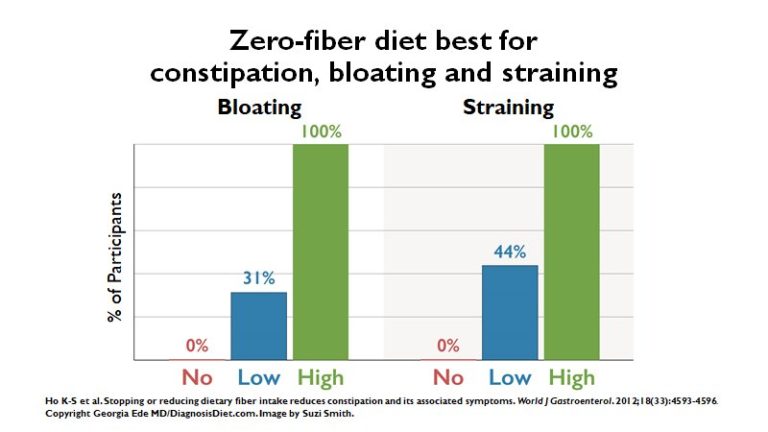
Fiber is necessary, perhaps, if you are eating a Standard American Diet. If you don’t have any carbohydrates to process, the body seems to do just as well without fiber.
Then there is the concern of what is going to happen to the gut biome – the balance of bacteria that helps in food digestion and prevents diseases.
And I will take a quote from Ryan Munsey once again:
“Yeah, it would starve some of the good ones [bacteria] as well, but maybe we don’t need as many of those. Maybe we only need them if we’re eating a high-plant diet. It’s never been studied, so for people to jump right out and say the carnivore diet is wrong and bad for your health… well, we don’t know that.”
While people fear that starving some of the good bacteria in the gut can promote inflammation and impair the immune system response, Ryan’s quote makes sense – who knows how many of them we need once we account the lack of carbohydrates and plats.
Humans can’t digest meat (meat will rot in the colon)
This is a myth that’s been parroted around for decades. And without a second thought, it does seem somewhat credible. After all, meat takes more time to prepare on the grill, so why would it be different when it comes to being processed in your gut?
Well, here is the short version taken from an article written by J. Stanton:
Most of the edible part of a plant is cellulose, a polysaccharide (i.e. a very long chain of sugars) that is very difficult to break down. In fact, no digestive enzyme, in any animal, is capable of breaking down cellulose! So the only way that any animal can fully digest plants is for its gut bacteria to break down cellulose, and its intestines absorb the waste products.
Humans, in contrast, don’t have gut bacteria that can digest cellulose. That is why we can’t eat grass at all, why there is so little caloric value for us in vegetables, and why we call cellulose “insoluble fiber”: it comes straight out the back end.
This fact alone proves that humans, while omnivores, are primarily carnivorous: we have a limited ability to digest some plant matter (starches and disaccharides) in order to get through bad times, but we cannot extract meaningful amounts of energy from the cellulose that forms the majority of edible plant matter, as true herbivores can. We can only eat fruits, nuts, tubers, and seeds (which we call ‘grains’ and ‘beans’)—and seeds are only edible to us after laborious grinding, soaking, and cooking, because unlike the birds and rodents adapted to eat them, they’re poisonous to humans in their natural state.
He also adds this firsthand experience from an intestinal transplant survivor:
“Can Humans Digest Meat?”
“Because I had such an extremely short bowel, my output was very high because no absorption had taken place. I was fed and hydrated by infusion and could literally live without eating or drinking at all.Because of my excessive output, we had to make a rig that had a hose extending from the ostomy bag that drained into a one gallon jug. Often the hose would get clogged and my wife or sister would have to use a coat hanger wire to unplug it. Now if vegan pseudoscience is right, we would suspect that the hose was being plugged by pieces of meat.
“Never once did we see any solid chunks of meat. I became so curious about this that I once swallowed the largest chunk of meat I could possibly get down without choking. Because of the shortness of my bowel, it only took about twenty minutes for my stomach to empty into the ostomy. Better than two hours later, there were no signs of any meat chunks.
What was always clogging the ostomy tube were pieces of vegetables that were not fully chewed.“Entire pieces of olive, lettuce, broccoli florets, grains and seeds were found. Yet, large pieces of fat were never witnessed. As a matter of fact, all the fat from the meat was already emulsified by the bile into solution. Over time, fat would coagulate on the side walls of the ostomy bag, but never were there any solid pieces observed.”
Cardiovascular problems
“Wait a second” I hear you saying “isn’t meat bad for your cardiovascular health?” Well, it turns out that the mantra we’ve been all collectively humming is perhaps flawed.
As Ho KJ et al have concluded in their study from 1972, the incidence of heart disease among the Point Hope residents was ten times lower than the general Caucasian population of the United States.
“The Point Hope inhabitants represent one of the few remnants of the Eskimo whale, sea, and walrus hunting cultures in the world…Average total daily caloric intake was approximately 3,000 kcal [calories] per person, ranging from 2,300 to 4,500 kcal. Approximately 50% of the calories were derived from fat and 30 to 35% from protein. Carbohydrate accounted for only 15 to 20% of their calories, largely in the form of glycogen [animal starch] from the meat they consumed. Grain products were scarce and although sucrose was not unknown, the average adult ingested less than 3 g/day, primarily for sweetening tea or coffee.”
Furthermore, their triglyceride levels averaged 85 as opposed to their Caucasian countrymen whose average is at around 100.
And there were people who generally tried to dismiss the study, by claiming that there must have been a host of genetic differences that was not accounted for.
However, another study (Lancet, 1983) compared native people from Alaska who reported eating the highest percentage of native foods (that is to say animal foods), and those who reported eating the lowest percentage of native foods. Triglyceride levels, again, were around 25 points lower in those who followed the more traditional diet.
Countries eating more meat, and their life expectancy in ages
The OECD report from 2016 made a comparison in overall meat consumption for most of the countries in the world, listing the numbers for 2014 for annual meat consumption in kilograms of meat per capita. So here it goes.
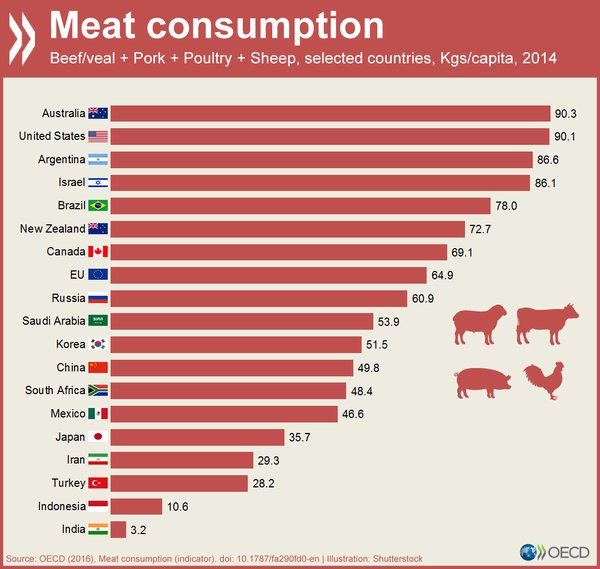
And here is the list of countries by life expectancy.
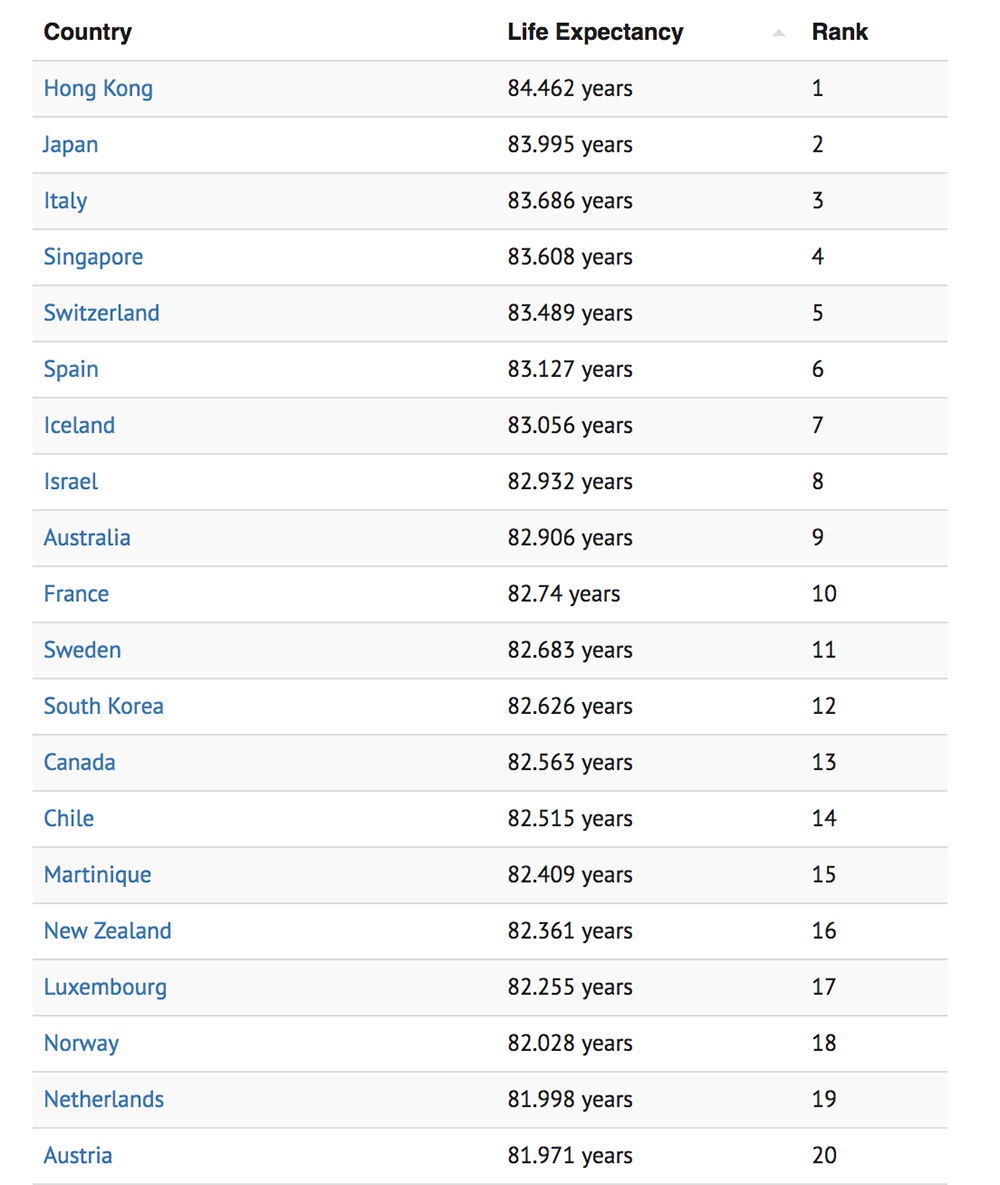
However, as you can see, the first graph provides info for the combined consumption of beef/veal, pork, poultry, and sheep. Japan, for example, which is quite low on the list when compared to US, surely consumes a lot of seafood.
Furthermore, note that some of the meat consumed in the US and throughout the west is usually deep-fried, coated with all sorts of crunchy delicacies, and combined with carbs galore. You should also consider level of physical exercise, genetics, lifestyle habits etc. before making an accurate comparison between the two charts. Correlation doesn’t mean causation!
Micronutrient comparison
Before we move forward, let’s zoom in on some of the differences between plants and meat when it comes to micronutrients.
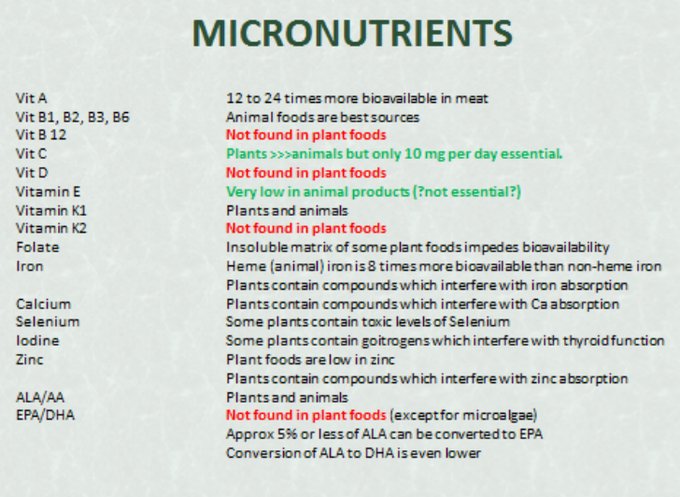
And here are some nutrition facts for 100 grams of a ribeye steak (quite common cut on the carnivore diet). I used 100 grams because it is a nice reference point which easily gives you a perspective on how much percent of it is protein and how much is fat.
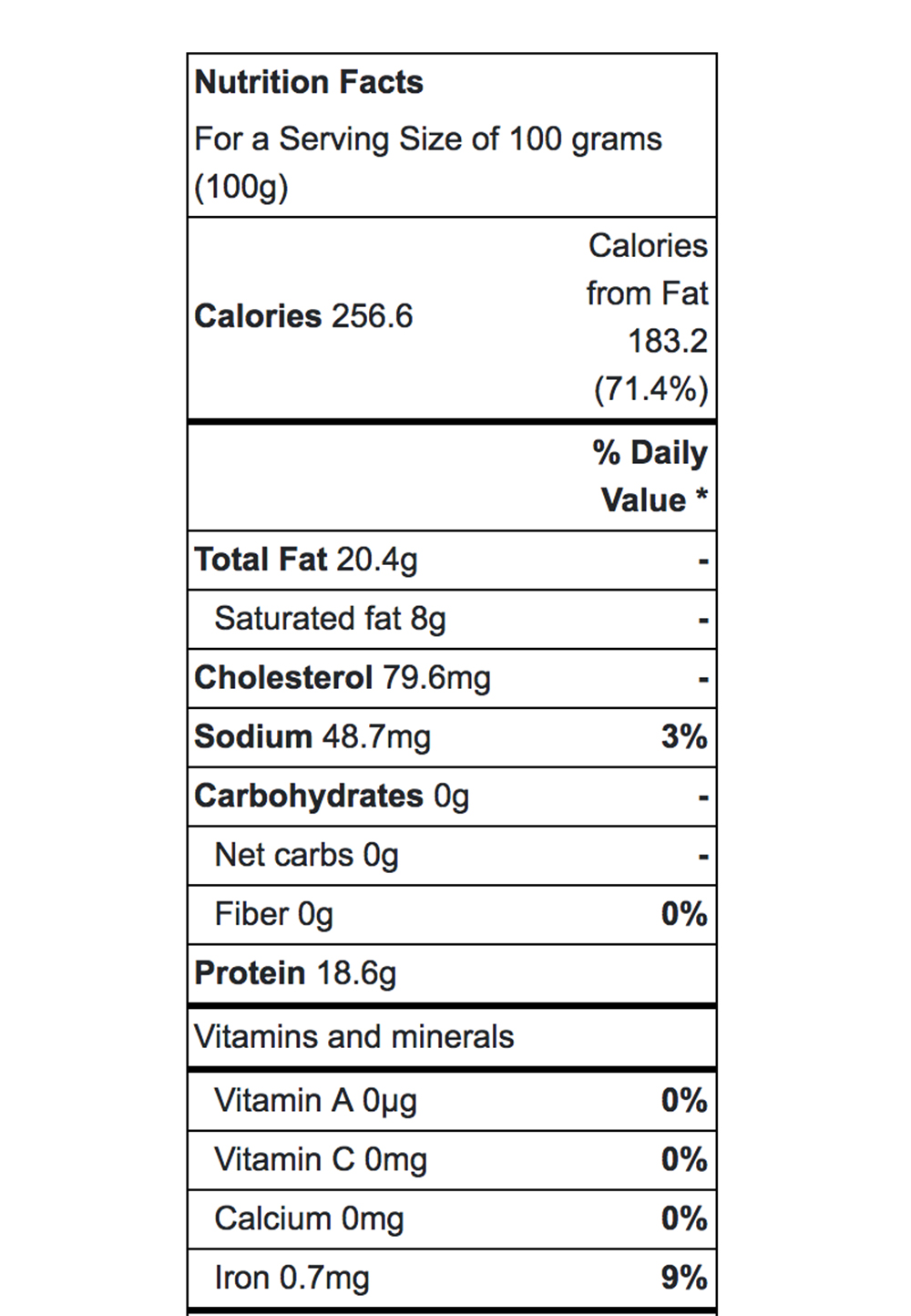
Zero carb diet, low carb diet, or carnivore diet?
Most of the time, the terms zero carb diet and carnivore diet are used interchangeably. However, one implies that you shouldn’t eat carbs, while the other specifies the exact source of protein and fat – meat.
The term low carb diet is commonly used in parallel to the keto diet, so it is never to be mistaken with the original concept of the carnivore diet.
The meat only diet plan doesn’t care about low carb or zero carb; it specifies, instead, a list of animals, meat cuts and organs that you can derive your nutrients from.
Cost of the carnivore diet
While I’m not currently in the states, some calculus can be made regardless. It turns out that meat, even though expensive, is comparatively more affordable than a mix of other products.
Vegetables for example, are more and more expensive by the season, and the same can be said about grains and seeds, not to mention nuts like almonds, walnuts and hazelnuts.
In comparison with the Standard American Diet, an all meat diet, although counterintuitive, is not that expensive.
In many rural areas buying a whole cow, or a whole pig is common practice. A butcher will then work on the meat, preparing different cuts for you to pack and freeze. Needless to say, this is the bulk order approach, and it is generally much cheaper.
Meat in a box
For those of you who always want to throw extra dollars, the carnivore diet is never an obstacle. Below I present you with a list of subscription boxes, all shipping delicious meat cuts, prepared or raw, directly to your doorstep.
The Carnivore Club offers premium artisanal meats, and it is the world’s first subscription service featuring cured meats delivered in a box. With every artisan being different, and every box unique, this subscription service proves that carnivores too can enjoy the wonders of the free market.
(Disclaimer – we are into the Carnivore Club Affiliate program, so when you purchase a box subscription, we receive a one-time commission)
Butcher Box is offering a wide variety of humanely raised meat, free from antibiotics and hormones. They are mentioned on Today, Inc. Men’s Health, Food and Wine and the New York Times.
Greensbury is shipping organic grass fed beef, organic grass fed poultry, and sustainable seafood. You can order beef that comes from North and South Dakota, bison and lamb from Colorado, pork and turkey form Pennsylvania, poultry from Virginia and duck from Indiana…
Vital Choice is selecting a variety of sustainably-caught wild seafood and delivering it to your doorstep. They include Salmon, halibut, tuna, cod, sole, sablefish, and ship them in all the different varieties that you can imagine.
Farmer Girl is another subscription service that many carnivores are recommending, and it is shipping grass fed beef, free range chicken, heritage pork and pasture raised lamb. Their mission is to create a holistic food system that gives everyone access to high quality, healthy and responsibly raised food.
Omaha Steaks offers a subscription service, or as they want to call it – he gift that keeps on giving. Their one-year gift plans deliver premium steaks, popular variety combos and favorite meals from the menu over a 12-month period.
How to track your results
Depending on what you want to observe, you can ask your doctor and make a list of markers for future comparison.
On the more obvious end of things, you’ll want to keep a journal with simple questions you have to answer daily, if not multiple times throughout the day. It is important to know how you feel overall, how your digestive system is behaving, what is the quality of your sleep like, etc.
People who write their testimonials online tend to notice a garden variety of benefits they never even hoped for – like for example healthier looking skin.
You can take weight loss scale measurements if you so prefer, but make sure to measure around your waist and thighs as well with a tape, writing down the number of inches. Being a fitness fanatic, I’m always advocating for the tracking of size and overall looks, versus the number on the scale.
If you suffer from a debilitating condition, chronic pain, minor or severe mental issues, or perhaps an autoimmune disorder, tracking the results is rather easy – the less of your problem, the more your carnivore diet is working.
If you were searching for carnivore diet results, hoping to find people with six packs showing them off in front of the mirror, you’ll be rather disappointed. Most of the testimonials focus on health improvements rather than weight loss. You will burn fat, and that is a given – however, it will be only as spectacular as your dedication to calorie tracking, and your willingness to exercise at least 15-20 minutes per day.
What does it mean? Well, it is simple – if you devour juicy steaks morning to evening, and sit your butt behind a desk most of your waking hours, the extent to which you burn fat will be mild at best. You won’t have to count calories like your life depends on it, but definitely take a ballpark estimation and commit yourself on following it closely. And that brings me to the next chapter.
Below, in the list of references, you can once again visit Meat Heals, and see a lot of carnivore diet before and after photos of people who were initially interested in solving a medical problem, but ended up looking lean and defined.
How to start with the carnivore diet
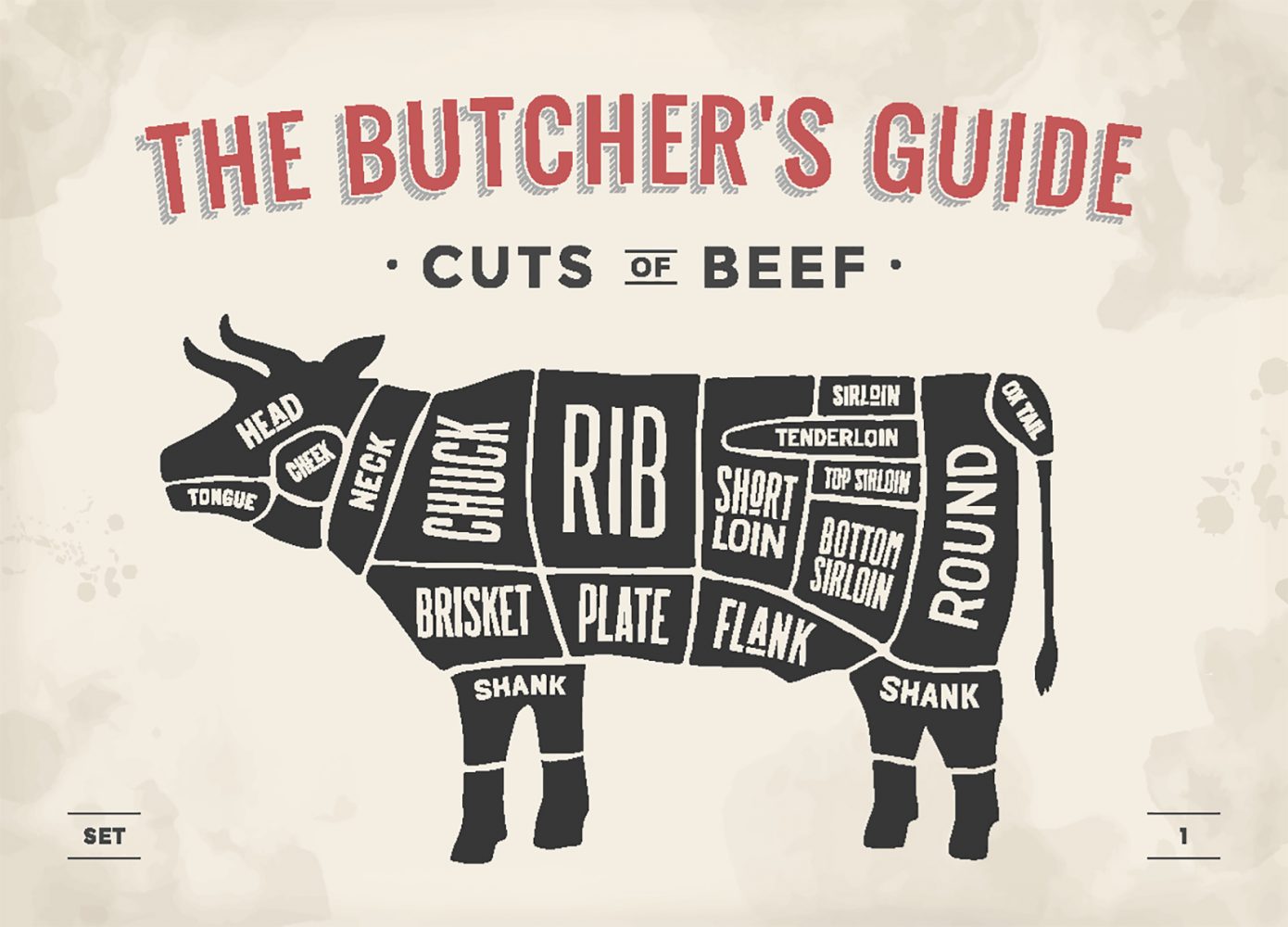
Whatever else might be said, much depends on your current lifestyle. If you are, for example, addicted to carbs and sugar, a meat only diet for a week will definitely test your metal.
Some people like to start with a mixed bag, adding animal products like eggs, butter and heavy cream as well. You can use this approach as a short transitional phase, and then go on a meat only diet for another week.
Most of the people writing about the carnivore diet, however, including the ones mentioned in this article, would tell you to go all meat, without anything else added.
That’s a full-pledged carnivore diet right off the gate, with meat, water, and salt as the only three things you’ll be putting in your body. Not a week, not 10 days, but a whole month!
How much to eat?
The carnivore diet meal plan won’t give a specific number of calories. The carnivore diet meal plan is simple indeed – eat 2 or 3 times per day, have as much meat as you need, and that’s the entire manual surmised in a brief.
Usually, you should go ahead with your meal until you feel satiated. This means different quantities for different people, but make sure not to feel hungry.
Dr. Baker mentioned on the Joe Rogan podcast that most people would eat about 2 lbs of meat per day. If you work out and have a demanding schedule, you can go as high as doubling the amount. Then again, it depends much on which animals you eat, and which cuts specifically.
Needless to say, your daily requirements will vary, as you begin to realize that you either need more, or perhaps less than what you initially started with.
When to eat?
You can either schedule your meals around the cultural norm, which is to say 3 times per day (breakfast, lunch and dinner), or practice intermittent fasting.
Some people even experiment with snacks (like for example chicken hearts).
Breakfast wise, you should discover your own rhythm, but the choice remains between consuming your food within one hour of waking up, or timing your meals later, throughout the day and evening, eventually skipping the carnivore breakfast.
There is a very useful article which I used as a guide, that tells you exactly how to start the carnivore diet (what to eat, when to eat, and how much to eat) written by Dr. Kevin Stock.
He has an interesting note on consuming organ meats, and a very handy manifesto on how to start the carnivore diet and progress through the regimen in 3 phases.
How to cook the meat?
While seafood can be consumed cooked as well as raw, most birds and other animals should be cooked. From rare to medium rare, all the way to well done, you can cook your meat any way you prefer.
As many of you would notice, taste can change during the course of the carnivore diet, so it doesn’t mean that you will remain true to a single preference. People have reported increased allowance for raw meat than before starting the diet.
I searched through the support groups, and online communities, but didn’t manage to find what exactly is allowed when it comes to ways of cooking – should you stick to the gill only, or can you boil, bake, etc.?
I suppose there is no serious harm preparing your meat one way or the other, as long as you don’t add extras, like for example oil.
Boiling, however, will take some of the fat out, and this is why I wouldn’t generally recommend it.
Another advice would be to minimize cooking at high heat, while never exposing meat directly to a flame. Also, do not eat charred or smoked parts – when your meat is burnt on the barbecue, simply cut away all of the charred pieces. If you must cook at a high heat, make sure to flip your meat frequently, in order to prevent it from getting burned.
However, there is a lengthy piece written by Mark Sisson, that discusses the actual harm, or lack of it thereof, usually associated with charred meat.
What to eat when you are away from the refrigerator?
I found this advice on the zero carb subreddit so take it with a grain of salt (literally, when you think about it!). You can prepare your own jerky, or find a quality package and have a bite or two when you feel exhausted, hungry, and circumstances won’t allow for a juicy steak.

Don’t feed a lion with bugs and plants!
You can also try pemmican, which is a concentrated mixture of fat and protein.
Other than that, most restaurants will do the trick, but you should specify to the waiter that you don’t want your meat prepared with added oils.
Below I’ll present a list of carnivore diet snacks.
Things to consider
The first week is usually the hardest, and I can say that I’m experiencing some of the challenges. There are fluctuations in energy levels, focus, and definitely appetite.
I won’t recommend starting the carnivore diet when you have a busy schedule, or tasks that have been piling up for a while. Clean your schedule, give yourself a bit of an extra time each day, and make sure not to compromise sleep!
Your appetite will undergo some wild swings, so make sure you are mentally prepared for the challenge. Meditation can help a lot.
Carnivore diet food list
Depending on what you decide to follow, two shopping lists are available. One is all about meat, while the other allows other animal products.
For the meat only diet, you can go with beef, pork, lamb, goat, wild game, chicken, turkey, duck, and seafood such as fish, oyster, crab, lobster, shrimp and squid.
Eat the fatty cuts of the meat as opposed to the lean ones only. This is very important, since you’ll want to consume natural saturated, unsaturated and monounsaturated animal fat.
As for which parts of the animal you are going to eat, follow a simple list like the one below, which is essentially a more detailed carnivore diet food list:
Beef
- Steaks – ribeye, strip, sirloin, and chuck eye
- Roasts – prime rib, brisket and chuck
- Ribs (yummy!)
- Ground beef
- Strips of beef
- Organs – liver, heart, sweetbreads
- Marrow bones
Pork
- Roasts – shoulder, butt
- Ribs – baby back ribs, spare ribs
- Shoulder chops
- Pork belly
Lamb
- Chops
- Shank
- Ribs
Poultry
- Thighs
- Drumsticks
- Wings
- Breast (though it is too lean)
Seafood
- Salmon (yummy!)
- Sardines
- Trout
- Mackerel
- Lobster
- Oysters
- Shrimp
- Crab
This is essentially the core of the carnivore diet shopping list, but much depends on which approach you decide to follow.
If you decide to follow the other types of carnivore diets, where more animal products are allowed, simply add eggs (chicken, duck and roe), heavy cream and grass-fed butter. Some people like to add cheese as well.
How about processed meat? Bacon strips, sausages… From what I’ve read, there is no harm per say, but some people avoid them. L. Amber O’Hearn recommends fresh pork side. She says that you can salt it as desired and it would definitely taste close to bacon – if not even better.
There is an interesting experiment from a guy named Dan Quibell who only ate bacon for 30 days. The results? Twenty pounds of weight loss, improved cardiovascular health markers, and lower blood pressure! You can learn more about it on his Facebook group.
Carnivore diet snacks
You can have meat prepared in smaller cuts, or chose something form the list below:
- Chicken hearts
- Jerky
- Pemmican
- A chicken wing or two
- Grilled Sprat (very small and tasty fish)
What to drink
If you follow the ascetic route, water is the only choice. Sure, you can swap between tap water, spring water, mineral water or filtered, but that’s all you are allowed to drink. People also recommend adding salt to your water for those extra electrolytes (like Redmond Real salt).
Some decide to keep their coffee or tea, and you can definitely do so, as long as there are no sweeteners or added sugar.
I’ve recently discovered black tea, and as someone who becomes ballistic on caffeine, one cup is enough to keep me alert throughout the entire morning and well past noon. I don’t think I’m going without it, at least for now.
Some people report increased caffeine sensitivity throughout the meat only diet, but much depends on the person you are asking. I cannot imagine becoming any more sensitive to caffeine than I currently am. That would certainly give my wife and friends some serious laughs (You wouldn’t believe how jittery I become after a cup of espresso. It’s truly a spectacle to watch!)
How about supplements?
While no supplementation is required, some people prefer to add potassium, magnesium and salt. Much depends on your lifestyle, particular needs, and of course a consultation with your physician.
Supplementing magnesium, however, makes sense. A recent study showed that most of the people who were following a ketogenic diet, with at least 70% of calories from animal foods had adequate serum magnesium levels.
However, another study points out to the fact that people can have normal serum levels of magnesium, but still have deficient tissue levels.
Organ meats supply a ton of vitamins and minerals, so make sure to include liver in your diet. You’ll get folate, choline, vitamin A, vitamin D, iron and copper. Seafood, like oysters would also provide vitamin D, iron and copper as well as manganese, omega 3s, selenium and much more.
The only thing that I cannot understand is why not supplement your carnivore diet with vitamin C, or other vitamins and minerals for that matter?
Did I mention oils?
No I did not. And that’s quite intentionally – plant oils were mostly used as medicine so I wouldn’t know what to do with them on a month-long carnivore diet. Maybe someone from the community can chip in and answer this one for me.
So, this means no vegetables at all?
That’s right. Not a single leaf. There are people who begin with a mixed diet, only to arrive at the minimalist approach of eating just meat. However, the reverse is definitely the case too – some folks like to try the all meat diet, after which point they once again allow certain leafy greens to enter their menu.
Take for example Perfect Keto founder – DR. Anthony Gustin who eats 90% carnivore after completing a full 30-day experiment with the meat only diet.
While many people realize how plants were ruining their energy, and messing up with their health, others find the exact opposite – they need those few leafy greens, or a handful of selected veggies.
For those who choose the second approach, their menu gets to be more colorful.
A carnivore diet breakfast would include scrambled eggs with pork or even bacon, while a carnivore diet lunch can be ground beef with some heavy cream or leafy greens. Regardless of the preference though, a carnivore diet dinner is almost always about meat only.
The carnivore diet on the long run
Finally, the dilemma which many people want to solve – Should you stay on a carnivore diet for longer than three months? When do you actually cash the check – how much weeks or months are necessary for fixing your chronic ailment, and enjoying the benefits of the carnivore diet?
While most of the people would notice benefits weeks after starting their all meat diet, sometimes it takes more. Two or three months will definitely tell the entire story, and you will know, all too intimately, the details around the carnivore lifestyle.
I would recommend starting with a week or two, just in order to get the ball rolling. Then, if everything seems to be going well, just finish the month and take your preferred measurements. Make sure to consult a doctor throughout your experiment, and decide whether or not to prolong the initial testing window.
As for the long run, nobody really knows. Anecdotal evidence will tell you to go for it, but you should figure things out on your own while closely monitoring your body.
Should you decide to run this experiment for longer than two months, you should also consider stopping the protein intake for a day or two, by implementing intermittent fasts. Massive protein intake is great for muscle growth, but we discussed about IFG-1 above, so it would be nice to go through a “protein detox” every once in a while. I’m not a professional, but this sounds like common sense.
However, L. Amber O’Hearn says that she’s been eating a carnivore diet for almost 3 years, and I don’t think she mentioned anything about a “protein detox”. As much as it sounds logical to me as a layman, more informed people seem to be quite chill about this so called protein-overload.
Same goes for Joe and Charlene Andersen. Here is a tweet from Joe:
My lovely wife Charlene, 19 year carnivore. No exercise or calorie counting. Just gloriously fatty steak everyday. ❤️? pic.twitter.com/pEfBhVTY8I
— Joe Andersen (@JoeCharlene8898) October 9, 2017
And he is not your average fanatic either:
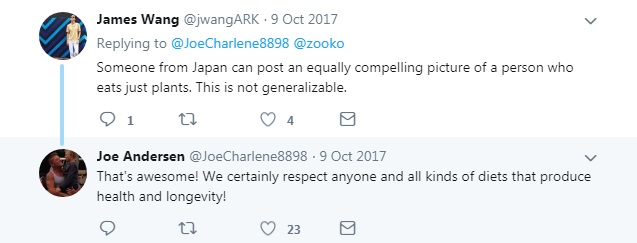
This is actually the situation in my home right now! My wife is a raw food enthusiast, eating nothing but fruits, vegetables, plants and seeds, while I started a full pledged carnivore diet.

My lovely wife – a herbivore extraordinaire!
There is a vegan/anti-vegan war raging on, but we keep it civil. She is actually quite healthy (never got sick in the last couple of years), very energetic, and physically capable – a mountain biking enthusiast that is giving me a tough challenge every weekend.
So I want to test the other side of the rainbow and see what it’s like.
Moving on, Kelly from My Zero-Carb life, has been eating a carnivore diet for 7 plus years. She went through her pregnancies without any problem whatsoever.
If you are quite determined about eating carnivore for the long run, make sure to find a quality meat supplier, and steer away from factory-farmed animal meat. Instead, search for grass-fed and organic. Meat is all you’ll be eating, so spend more time (and perhaps some money) to find a good source.
Carnivore diet vs. Keto diet
Tracking back the history of the ketogenic diet, we can see that it is closely connected with the history of the treatment of epilepsy. Russell Wilder, at the Mayo Clinic, in 1921, used the ketogenic diet for the first time, in order to treat people with epilepsy.
Between the 20’s and the 30’s, the popularity of the diet has exploded, making it the only treatment for epilepsy in the United States for the time being. Phenytoin, which is the first drug for epilepsy, was introduced later in 1937, and the keto diet stepped away from under the spotlight.
Then, many years later, a Hollywood producer during the early 90s, started searching for a cure for epilepsy for his son. He later found the answer in the ketogenic diet, the same method used decades ago.
The boy became seizure-free, and Jim Abrahams was convinced that the method would help other people as well. He went on to make a documentary, actively promoting the keto diet. The medical community soon joined, and the benefits of the ketogenic diet came under the spotlight once again.
So how is the Keto diet similar to the Carnivore diet?
Both of these diets allow fats and protein while at the same time completely eliminating carbs.
The difference, however, is mainly in plants, nuts and seeds, all of which are allowed during the keto diet. Furthermore, the keto diet would encourage a high fat intake while only a moderate amount of protein.
And this is due to its desired goal which is to put you in a state of ketosis. The carnivore diet, on the other hand, doesn’t have such a priority.
The keto diet, therefore, would recommend 60-70% fats, 20-30% protein and perhaps 5-10% carbs. In opposition, the carnivore diet doesn’t have to follow any macronutrient ratios. All you have to do is Simply. Eat. Meat.
Excess gluconeogenesis can take a person out of ketosis, so protein is mostly limited if you are following the Keto diet.
The ethical dilemma for the carnivore diet
I never gave this question the attention it deserves. Somewhat out of intellectual laziness, but mostly out of unwillingness to change. Even if I arrive at the conclusion that eating meat is unethical, there’d be a fierce internal battle for me to overcome. Meat is tasty, and we are very good at post processing things, so we don’t feel any sort of quilt.
There was a lengthy discussion on Wait But Why, on Is it ethical to eat meat? and the general conclusion is something I’d pretty much agree with.
The issue is not a clear black and white cut, but rather a spectrum – if animals were treated differently, raised under different conditions, and their life ended without unnecessary suffering, then we’d argue that this whole cycle is tolerable.
Tim Urban thinks that today’s vegetarians will probably end up on the right side of history. Imagine a future where in vitro meat is cheap and readily available, and the current practice suddenly seems horrific.
Sam Harris speaks about this issue very briefly on his podcast Waking Up, and agrees on the necessity to improve the farming process. However, he puts the Stop-eating-animals idea into question, and I will try to surmise and paraphrase as well as I can:
If an animal is being raised under the best possible conditions, and we find a way to end its life without suffering, then aren’t we talking about a net positive when compared against that animal not having lived at all?
A reader of Wait But Why has also chipped in, saying that what we need is not an ethical debate but rather an amazing product. When artificial meat is cheap and available there won’t be any need for animal farming. Which is the same approach taken by Musk when tackling the issue on burning fossil fuels – he is not interested in shaming people or advocating a cause, but rather making the alternative much more attractive and economically feasible.
This, however, is not to impose moral superiority – some would argue that animals being killed for food is not a morally wrong act. However, we can all agree that the conditions under which this process is taking place are not something we should be proud with. Who on Earth is fine with animals suffering at scale?
Further reading
Some may criticize the mash-up style of this article, where I tried to find the most relevant sources and bring most of what they say into one place. It took a lot of research, a lot of writing, and definitely a lot of energy to present them in a sequence that makes sense.
That being said, I enjoyed dissecting this topic apart. It crushed some serious stigma which I previously had, and I’m definitely willing to see this month through (started the carnivore diet!)
You can follow several different communities around the internet, and there is no shortage of people willing to share their stories and provide some personal guidance.
I hope this article gave you enough information on what is the carnivore diet, but make sure to browse through the rest of the reading material if you want to embark on a 30-day meat only journey.
Check out Zeroing in on Health, the World Carnivore Tribe Group and Principia Carnivora on Facebook. The number of members really surprised me at first. It seems that thousands of people are already following the carnivore lifestyle – religiously. (between writing the initial draft of this article, and editing the complete text, the groups gained a surprisingly large number of followers. And we are talking about few weeks at most. This thing is about to – as crypto enthusiasts like to say – moon!)
Check, also, the zero carb subreddit where lots of questions are already answered, and you can always start a new conversation.
If you are more into video than text content (after reading 10,000 words plus, right?) here is the lengthy conversation that Mikhaila had on the Joe Rogan podcast.
https://www.youtube.com/watch?v=PF_7688Zk6s
There is also another podcast where Dr. Shawn Baker is talking about the carnivore diet. Here it is:
https://www.youtube.com/watch?v=Yj_Bc9hdHa0&t=
Most of the people mentioned in this article have done an amazing job on gathering information for the carnivorous lifestyle. Some of them doctors and scientists, others dedicated aficionados and much devoted investigators… Their writings create a body of literature that is shaping this diet trend on the go. So below is a list of websites, for article references and further reading.